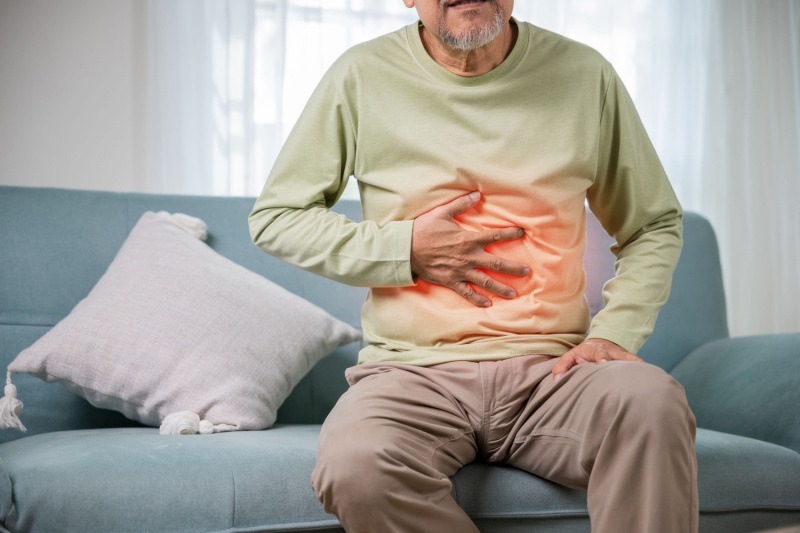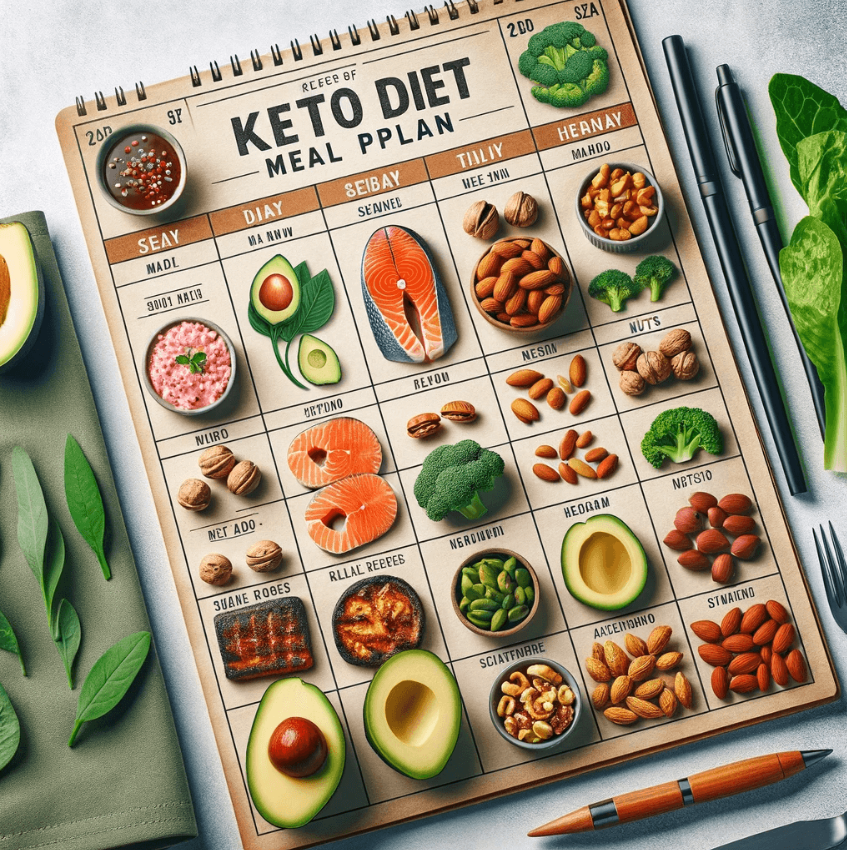1. Understanding Trapped Gas
Symptoms of Trapped Gas:
Trapped gas can cause a variety of uncomfortable and sometimes alarming symptoms. Sharp, stabbing pain in the chest or abdomen is common and can be severe enough to be mistaken for more serious conditions. Additionally, you may experience bloating and abdominal discomfort, which can be persistent and troubling. Belching and flatulence are typical signs, often accompanied by gurgling sounds in the stomach. These symptoms can sometimes mimic those of a heart attack, appendicitis, or gallbladder issues, making it crucial to identify and address the root cause of the gas.
Causes of Trapped Gas:
Swallowing Air (Aerophagia):
One of the primary causes of trapped gas is swallowing air, a condition known as aerophagia. This can occur from habits such as chewing gum, smoking, or eating and drinking quickly. When air is swallowed, it travels into the digestive tract, where it can become trapped and lead to discomfort.
Dietary Factors:
Certain dietary habits can also contribute to the buildup of gas in the stomach and intestines. Overeating can overwhelm the digestive system, leading to excess gas. Consuming difficult-to-digest foods, such as cruciferous vegetables (like broccoli and cabbage) and legumes (beans and lentils), can also produce more gas during digestion.
Digestive Issues:
Various digestive disorders can lead to trapped gas. Conditions such as Irritable Bowel Syndrome (IBS), Crohn’s disease, and food intolerances (e.g., lactose or gluten intolerance) can disrupt normal digestion and increase gas production. Bacterial overgrowth in the intestines can also contribute to this issue, as it alters the normal gut flora balance, leading to increased gas.
Other Factors:
Other factors that can cause trapped gas include constipation and stress. Constipation can slow down the movement of food through the digestive tract, allowing gas to build up. Stress can affect digestion in multiple ways, including altering gut motility and increasing the likelihood of swallowing air, both of which can contribute to gas formation.
2. Home Remedies for Immediate Relief
Herbal and Natural Remedies:
- Ginger Tea:
Boil ginger root in water and drink to reduce bloating and cramps. Ginger has natural anti-inflammatory properties that can help soothe the digestive tract and alleviate discomfort caused by gas.
- Peppermint Tea:
Helps relax digestive muscles. Peppermint tea can be effective in reducing gas and bloating. However, avoid it if you have gastroesophageal reflux disease (GERD) as it can relax the lower esophageal sphincter, potentially worsening symptoms.
- Chamomile Tea:
Relaxes digestive muscles and treats indigestion, nausea, and vomiting. Chamomile tea is known for its calming effects on the digestive system, making it a good choice for relieving gas-related discomfort.
- Fennel Seeds:
Chew a spoonful to reduce gas. Fennel seeds have been used traditionally to ease digestion and expel trapped gas. They can be consumed directly or added to dishes for their digestive benefits.
- Apple Cider Vinegar:
Dissolve a tablespoon in water and drink. Apple cider vinegar can help improve digestion and reduce gas buildup. It’s a simple and effective remedy to try before meals.
Supplements:
- Peppermint Oil Supplements:
Use enteric-coated capsules to reduce bloating and trapped gas. These capsules ensure that the peppermint oil is released in the intestines rather than the stomach, preventing heartburn.
- Activated Charcoal:
Take before and after meals to trap gas. Gradually increase intake to avoid side effects like constipation, nausea, and vomiting. Activated charcoal can bind gas-producing elements in the gut, helping to reduce bloating.
- Enzyme Preparations:
Use Lactaid, Digest Dairy Plus, Dairy Relief, and Beano to aid digestion of certain foods. These enzyme supplements can help break down food components that are otherwise hard to digest, reducing gas formation.
Physical Activities:
- Exercise:
Gentle exercise, walking, and yoga poses like tadasana (mountain pose) and virabhadrasana (warrior pose) help move gas. Physical activity can stimulate the digestive system, promoting the passage of gas.
Abdominal Massage:
Use the “I Love U” (ILU) technique to stimulate gas movement:
- Stroke from the bottom left side of the rib cage down to the left hip bone (forming “I”). Repeat 10 times.
- Stroke underneath the rib cage from left to right, then down to the left hip bone (forming “L”). Repeat 10 times.
- Stroke from the right hip bone up to the right rib cage, across to the left rib cage, and down to the left hip bone (forming an upside-down “U”). Repeat 10 times.
Optional: Finish with a clockwise massage around the belly button for 1-2 minutes.
- This technique helps guide trapped gas through the intestines, providing relief from discomfort.
- Heat Application:
Use a heating pad or soak in a warm bath to relax muscles and relieve pain. Effects are expected within 10-15 minutes. Heat can help soothe the muscles in the abdomen, facilitating the movement of gas.
- Baking Soda:
Dissolve 1/2 teaspoon in water to neutralize stomach acid. Use sparingly to avoid side effects. Baking soda can provide quick relief from gas by neutralizing excess stomach acid.
- Hydration:
Drink non-carbonated, room temperature liquids like warm water or herbal teas (peppermint, ginger, chamomile) to aid digestion. Proper hydration can help maintain digestive health and prevent gas buildup.
3. Prevention Tips
Dietary Adjustments:
To minimize the occurrence of trapped gas, it is crucial to avoid or limit the consumption of gas-inducing foods. Cruciferous vegetables, such as broccoli, cauliflower, and cabbage, as well as legumes like beans and lentils, are known to produce gas. Additionally, carbonated drinks and alcohol can contribute to gas buildup and should be consumed in moderation. Eating slowly and thoroughly chewing your food can also help prevent swallowing air, which can lead to gas.
Lifestyle Changes:
Certain habits and behaviors can cause you to swallow air, which increases the risk of gas. Avoid chewing gum, smoking, and drinking through a straw, as these activities can introduce excess air into your digestive system. If you wear dentures, ensure they fit well to prevent air swallowing. Increasing your physical activity can also promote better digestion and reduce the likelihood of gas.
Proactive Measures:
Taking proactive measures can help you manage and prevent trapped gas. Over-the-counter (OTC) digestive enzymes can be used before meals to aid in the digestion of specific foods, reducing the chance of gas formation. Keeping a food diary is another effective strategy. By tracking what you eat and noting any digestive discomfort, you can identify and avoid foods that trigger gas for you.
4. When to Seek Medical Help
Severe or Persistent Symptoms:
It is important to seek medical attention if you experience gas pain that is sharp, severe, or persists for more than a few hours. These symptoms may indicate a more serious underlying condition that requires prompt evaluation and treatment. Additionally, if gas pain is accompanied by unexplained weight loss, changes in bowel movements, blood in the stool, nausea, vomiting, or loss of appetite, it is crucial to consult a healthcare provider. These symptoms can be signs of more serious health issues that need to be addressed by a medical professional.
Consultation:
Always discuss ongoing remedies and supplements with a healthcare provider to ensure they do not interfere with any existing health conditions. A healthcare provider can offer personalized advice and recommendations based on your specific health needs, helping you manage gas and any related symptoms effectively.



